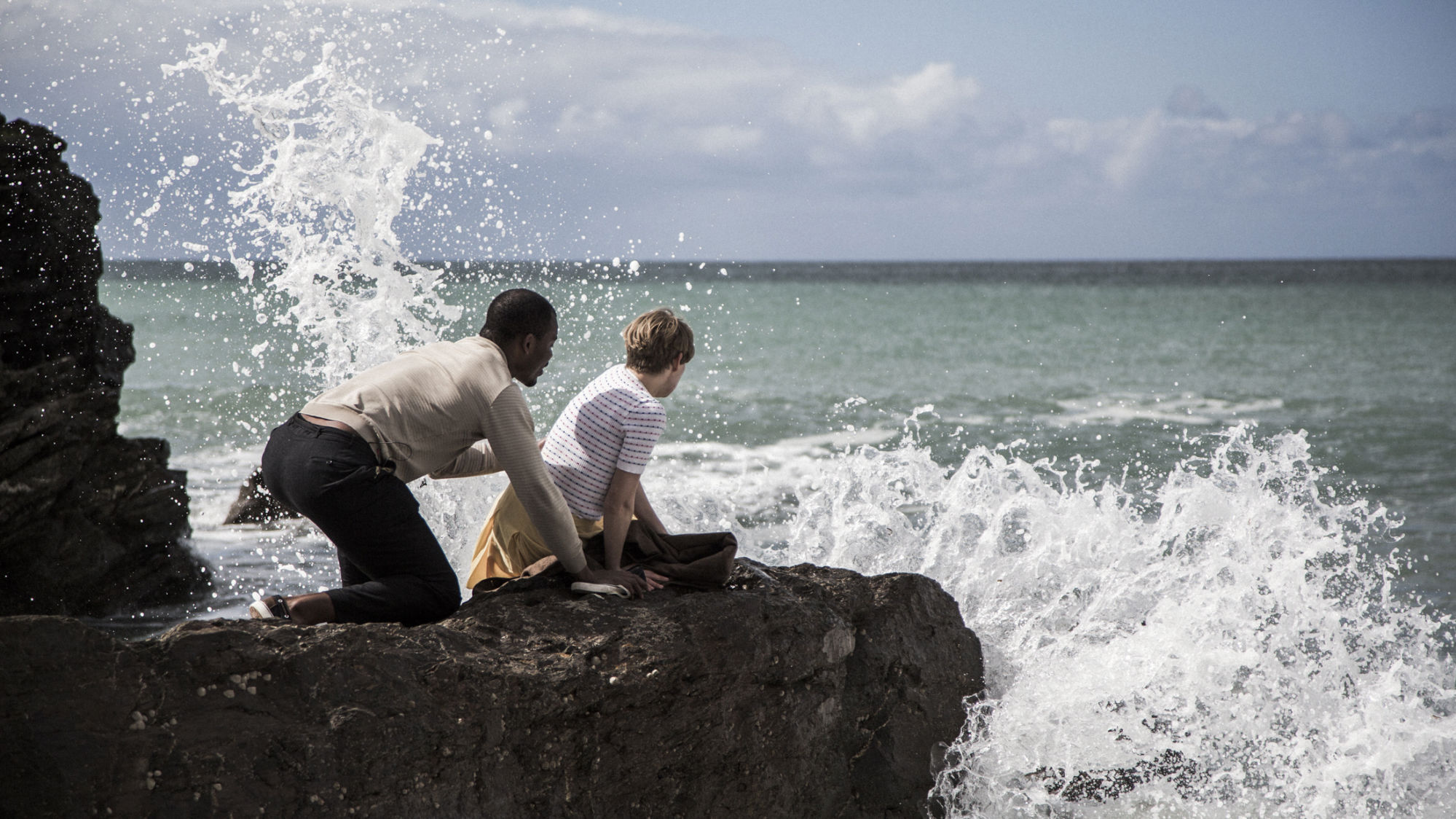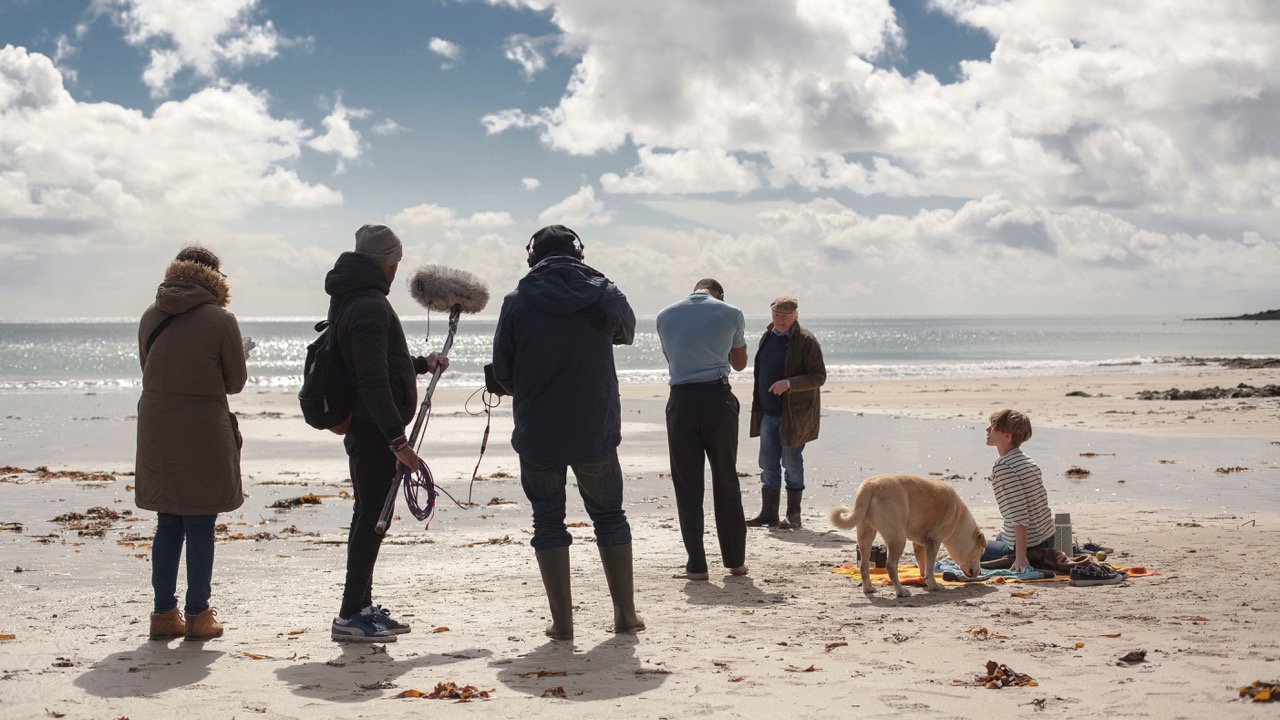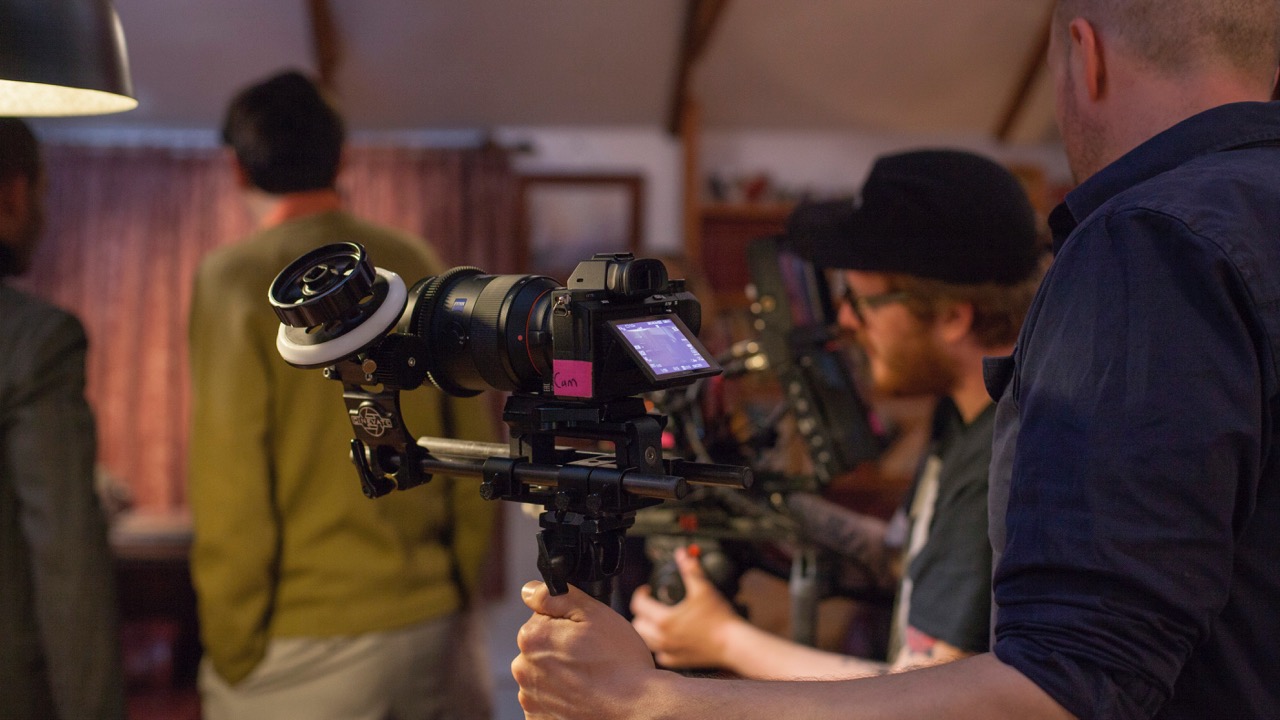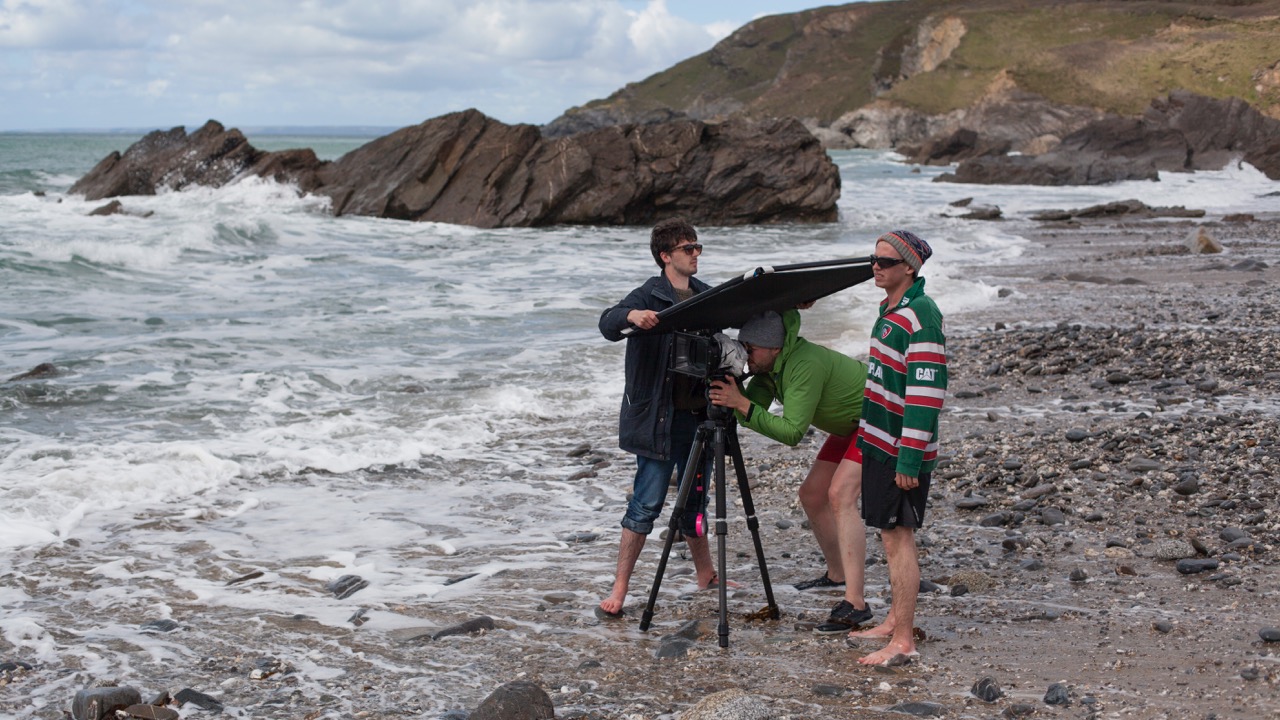
John and Alice are in love. In love with the idea of John and Alice. This is what the poster for Wilderness reads and it rings true to the heart of the film. But Wilderness isn’t just ambitious in its complex and revealing narrative. It’s also ambitious in its production – a micro-budget feature made as part of a co-production between Baracoa Pictures and Falmouth University’s Filmmaker In Residence project. I spoke to Writer/Producer (and my old lecturer) Neil Fox and DN’s first ever alum Director/Cinematographer/Producer Justin Doherty about this collaboration (the pair are also festival co-directors for the much loved and missed Filmstock) and the merging of feature film production and film school.
We originally conducted this interview back during Wilderness’ arrival onto the festival circuit but it has since been updated with a few additional responses regarding their collaboration with Sparky Pictures for the wide VOD release of the film, alongside some of the heartfelt and introspective responses the film has garnered on its successful festival run.
How did you go about forming the idea for Wilderness?
Justin Doherty: We needed to make something. It had been a few years since our last film together, a short, and life had taken us from the extreme of working together daily on projects for 15 years, to being the width of the country apart, having to work on our own careers and solo ventures. We had been tinkering with several narrative feature scripts for ages, and after some false starts trying to find a producer to work with decided that what was most vital, was to make something. So, Wilderness was very much made to a spec, encompassing the classic ‘Rodriguez’ mentality that got us started in film, to use what we had around us and craft something within those boundaries.
Neil Fox: The way we work is that Justin isn’t involved in the writing at all. But we have conversations about what I’ve done. I wrote it very quickly, in about four months due to work and not having a lot of time. I tend to think a lot when writing and have short bursts of actual writing. I set myself some targets, a set amount of pages and a set amount of what I called ‘scenes’. Mainly to set myself a challenge of being able to write something quick that I knew would be achievable. Personally, it was quite a new experience and after the first draft was done the flavouring started to take shape.
JD: From Neil’s screenplay, we did not redraft over and over but more often talked about the flexibility of the scenes, and their placement, knowing that we were structuring a shoot that would allow us to re-draft as we went with the luxury of a writer on set, and I could go forward with the knowledge that Neil would trust me in any way in which I wanted to frame a scene.

Wilderness was made in part with the Filmmaker In Residence programme at Falmouth University, could you explain what that is and how it differs from a ‘regular’ film production?
NF: The Filmmaker In Residence project is something I piloted with this project as a way of developing a micro-budget model for professional and emerging professional filmmakers to access funds, crew and resources to make a micro-budget film using what a film school has to offer. The film school gets the opportunity for immersive access to a real filmmaking experience that hopes to bridge the difference between theory and practice. Making a student film and a professional film is something else. There are only a few ways of getting films financed and with there being a drive for universities to be visible in public the question was, is there a way to make films commercially that benefits the students’ education and career development but also enhances the brand of the school. Fundamentally, it’s the chance for students to work whilst they’re studying in the security of a university production with professional filmmakers making professional films. It hasn’t happened anywhere else, making feature films in this way, that is.
It hasn’t happened anywhere else, making feature films in this way.
JD: We’ve always built education into our work, be it on film shoots or in our past life as festival makers. That’s how I learned, by doing, and I’m sure there’s something about me being from a family of teachers that informs this too. Neil, now a doctor of words, is also surrounded by film education in his position as Falmouth, and it was his design of the Filmmaker In Residence scheme, with this project in mind, that was the enabler, both with financial support and organisational support. With the finances that we could raise privately, plus the generosity of the school providing funds for us to bring on around 25 interns across the whole spectrum of production, it was the vital production partner we needed.
NF: Outside of the cast who were all professionals there were four professionals; myself, as Screenwriter and Producer, Justin as Director, Cinematographer and Producer, the Editor Steve and then Jem, who was the Sound Recordist. Everybody else was a student, so 75% of the film crew had never been on a professional set before. This is certainly not going to become a regular way of making stuff and it’s not going to work for most types of filmmakers but there are filmmakers out there who I know that would gravitate towards this way of working who can bring real experience to those students and be able to go away with something they’ve made which they can take out into the world. It’s an ambitious teaching project but it’s also something that’s ambitious in terms of attracting filmmakers who then go out into the world with a feature film that they hopefully take to festivals and sell.

Cool, so with that in mind what’s the response been like from not only the students but the professionals and university staff?
NF: When we showed the film to my bosses, who were the main funders, we showed them the earliest cut and they were really excited and really proud of it and pleased that we made something that was serious, adult and cinematic. Since then, in terms of the investment they’ve made, the places and festivals the film has played has meant that they have gotten something out of it. Again, I’m not sure there are many places that would’ve allowed this to happen the way it happened with the trust that we’ve been afforded.
The student reception has been interesting. I recently did some interviews with some students who worked on the film as part of my academic research which is tied to this project. Those students, since the production, have gone on to make stuff on the course and I wanted to see if they’d taken anything on from making Wilderness. We’ve got some really good third years this year and it was really encouraging to hear them talk about the practical things they’d learned on Wilderness. The things that make a film production work like organisation, scheduling, catering, how long a day is, how many setups you can do in a day and what you should do in a day, hierarchies, who’s in charge of what, who talks to who, checking footage and syncing footage on site. You could tell by the way they were talking that they knew the impact it had on their own work and made it better, made them better, which is encouraging because that was the point.
And I assume, from working on a film which is broader and more complex in its narrative, that it has been influential in that regard? I mean, it’s a film that rejects a formalised structure, closure and features characters that are well rounded and not likeable 100% of the time.
NF: My hope for the students is that it would be another thing that would help build up what their understanding of cinema is and what filmmaking and storytelling can be. You hope that when students come into university they start a journey of diversifying and expanding what they watch and what they engage with, not necessarily liking everything, but finding their own voice. I mean, I’m old fashioned, university, to me, should be a new introduction to ways of seeing and thinking that you haven’t had the opportunity or the time to engage with yet. You hope that they will want to just adapt to it. You hope that there are students that try.

Consistently throughout Wilderness we see John and Alice in recurring shots, most notably the beautiful, and quite telling, upside down two-shot of them lying down, could you talk a bit about how you crafted Wilderness from a visual point of view?
JD: How Wilderness was shot ended up being a much more internal process for me than intended. Our original DP, for reasons beyond anyone’s control, was unable to join us from the USA with only three days notice, leaving only one solution at this junction and that was for me to shoot the film too. Not what we planned, and there was, of course, a worry that my split time would compromise something. Whether it does or not, can be decided by the great and good who watch it. So, from that point on, the process was quite internalised for me, with no storyboarding, but just a gut-reaction process as to what was confronting us every day, much like the cast were doing. We shot almost entirely in sequence.
It’s a small story about two people, but that can still be big when it needs to be and then intimate when it has to be.
The repetition of motifs was very much a nod to the spirit of jazz music that I tried to lace through the film, hinting at the world in which John inhabits and the world where they met and fell in love, as represented by our old fashioned all-credits-up-front title sequence. Much like jazz, the repetition is built on, toyed with, interpreted, so each time you have a repeat, there is something that has changed. That is the nature of their weekend away. Nothing stays the same, their infatuation, the sex they have, the way they talk to each other, the people they think they are.
I also wanted it to be cinematic. It’s a small story about two people, but that can still be big when it needs to be and then intimate when it has to be. In some scenes, we are almost a threesome, John, Alice and the camera. In some scenes, there is almost a voyeuristic detachment. Getting the balance of that was hard, but I felt that the visuals were just very organic because of the way we ran the shoot. We had time. Even in such a short shoot (12 days), there was breathing space, talking space and I think then, the fact that I was in this forced dual role became the strength of bringing all these bits together.

One of my favourite scenes is when John and Alice meet with their friends and they have a dinner party, that scene is very free in regards to its dialogue. It reminded me similarly to the way Cassavetes would craft a scene, capturing the actors naturally with all their nuances through improvisation. Could you talk a bit about writing and shooting a scene like that?
JD: It is one of my favourite parts too and we had a lot of fun doing it. Once the location had been prepped, dressed and lit (we lit the whole place so the actors could pretty much move anywhere) we were then free to take a very theatrical approach to it, one of repetition, improvisation and then building on that to the point where what you see in the film is mostly from the last couple of takes (shot with two cameras) when we’d got to the point that the movement felt good, it felt alive and noisy, the additional lines that had come up had been fine-tuned, not forgetting the placement of the original scripted lines that needed to hit at the right points too. It was definitely for the editing room, where editor Steve Worlsey and I just had a great time piecing it together, with me hoping that my approach didn’t backfire.
NF: They improvised some stuff because of the way Justin wanted to shoot it. Justin knew the essence of each block of action and dialogue and how it needed to move on. As a screenwriter, you can’t really argue with that when he wants to shoot it in a way that will elevate what’s on the page.
JD: I love the theatre, and having worked that way when I’ve been performing, felt the actors would like to be free in this way, and I think they really did find it refreshing and creative to be unleashed and trusted. I think they do an amazing job of being real people in these scenes whilst maintaining the heightened edge we needed to move this pivotal breakdown in John and Alice’s relationship forward. It’s also the most natural scene because we come out of John and Alice’s bubble, which is very stylised writing, so I think the impact comes from this shift back into the real world where people aren’t in bliss.
NF: In regards to Cassavetes, the influence was embedded throughout Wilderness. It’s mainly in the scenes where John and Alice talk to each other and it’s about how they talk to each other and how you see people talk to each other in films. I was trying to make it confrontational and messy and raw. The best response we’ve had to the film is that people have valued the portrayal of the relationship because it’s rare to see relationships handled in that way. That came from seeing Opening Night in London on 35mm, just being blown away and emotionally drained. I was sat there thinking that no one does this anymore, no one puts people through the wringer on screen and in the audience for that kind of true emotional experience anymore. That’s what I was aiming for. I would not suggest in any way that we got there or I got there but that was the ambition. To be true to these characters.





How have the responses been to Wilderness from audiences? Are there any common or memorable reactions that stand out to either of you?
NF: One of the humbling aspects of the film’s journey at festivals has been the depth of the post-screening conversation around people’s reactions to the emotional resonances in the film. It has really made people think about their own relationships, past and present, and how they are in them, who they are in them. So many deep conversations about being in love and making love work and how messy and gut punch hard it can be. That’s been amazing, that is where I feel the ambition to get close to Cassavetes’ raw power can be most felt, in that impact.
Has Baracoa Pictures got any new projects in the pipeline?
JD: Always. Well, we hope it’s back to other films that were written first, and they couldn’t be more different. Hopefully on the festival journey we meet some like-minded folk who want to help us produce the next one, as we’d love to bring another body into the mix who can help improve us and push us in the right ways.
NF: We’ve enjoyed the journey of making Wilderness and seeing where it takes us. We hadn’t made anything in a while and we didn’t know this was going to be it. It felt good to make something again and it feels good to be a filmmaker again. I’m just starting to write something now which I’m excited about. What excites me now as a writer is more personal, honest stuff that expands the people I’m putting on screen and the relationships I’m putting on screen. There’s got to be some point and value to make cinema that connects with people.

What I love about Wilderness is the people who’ve found it and liked it, really really like it. I’d rather make work that fewer people saw but connected with it than something that just got lost in the mix. Maybe that’s an age thing, maybe it’s a teaching thing but I know where my film taste has gone. I want to make stuff that matters and I think that in a small way Wilderness matters. It matters in terms of relationships. Whether it’s any good or not, that’s not for me to say. I do feel proud about what we set out to achieve and it gave me confidence that I can still make films and still do what I’ve always done which is find something unique to make a story about.
I’d rather make work that fewer people saw but connected with it than something that just got lost in the mix.
Wilderness is now finally out in the… wild, how have you found the journey with Sparky Pictures to this moment and what are their thoughts on the film?
NF: It’s humbling that Sparky Pictures have picked up the film and believe in it as much as they do. We know it’s an acquired taste with a specific set of very-indie touchstones to guide audiences and to have them feel it’s a worthy addition to their slate and to put their weight behind it means the world. Also, to be in company such as Terry Gilliam, Danny Huston, Jessica Hynes, etc. makes this film lover very happy indeed. It’s a dream come true for a distributor to see your film and think it deserves a shot. Sparky are as indie as we are and that makes for a tough ride sometimes in a busy film market but also makes you band together and go at it as one.
Wilderness is available from the 5th April 2021 on all major digital platforms in the UK & Ireland.


